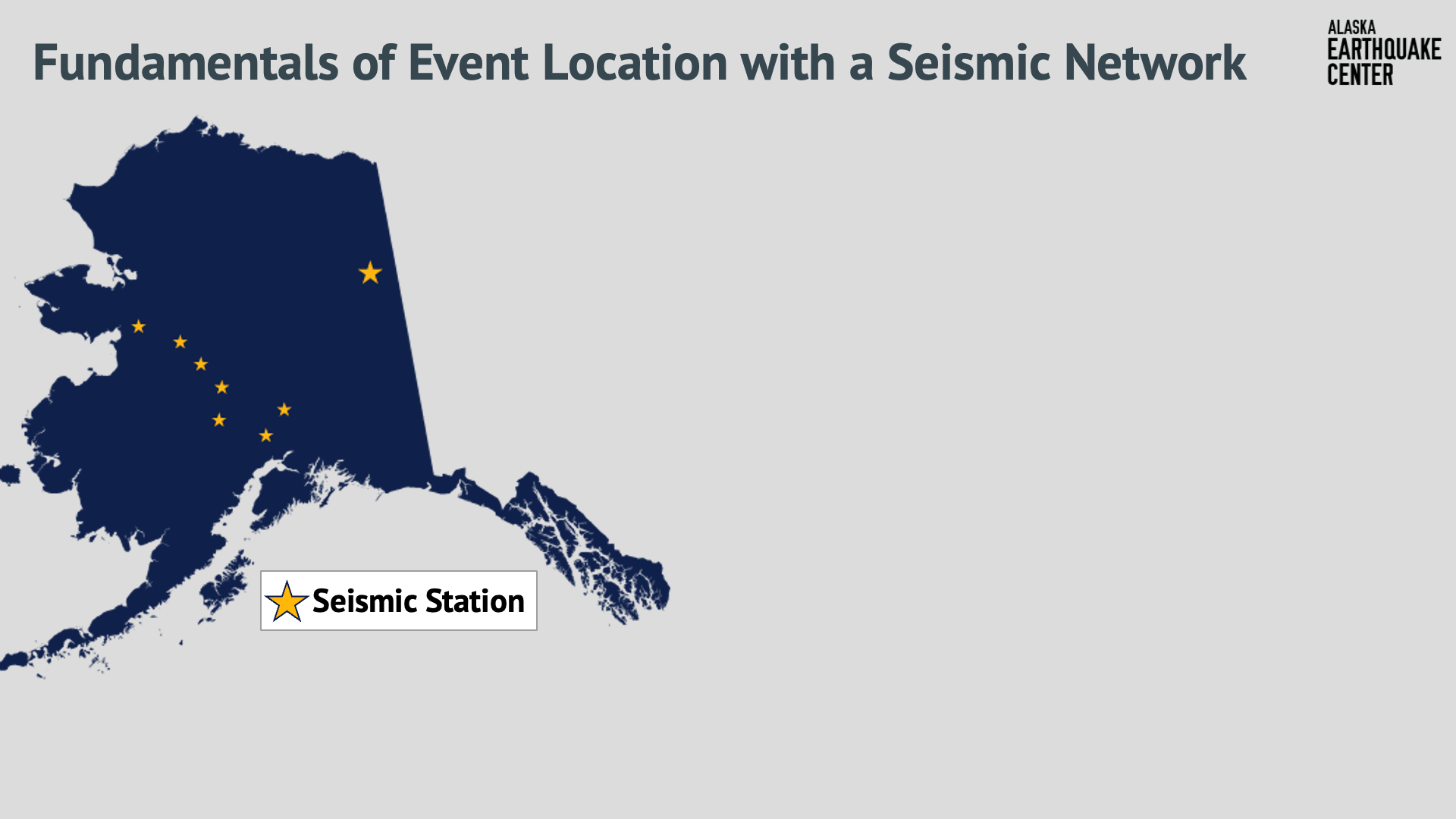
Have you ever wondered how seismic analysts locate earthquakes? Or maybe why earthquake solutions change over time? With the Alaska seismic monitoring network, we record an average of 100+ events daily. Every event is reviewed by our team of seismic data analysts for a more detailed, updated solution. To tackle this task, analysts review data in 8-hour time segments ranging from 20 to 40+ events each. Analysts both correct existing, automatic data and add additional seismic phase arrivals where an automatic solution is not provided. This is the foundation of the Alaska Earthquake Center’s annual earthquake catalog, which is processed in 1,095 time-segments and includes over 50,000 events!
To accurately locate an earthquake requires a minimum of six seismic stations with good data quality. On each station record, the primary, compressional wave (P-wave) and secondary, shear wave (S-wave) arrivals are picked. The faster P-wave increasingly outpaces the slower S-wave the farther away from the epicenter the earthquake is recorded. We can then use the difference between the recorded P- and S-wave arrival times at multiple seismic stations along with an earth velocity model to back-calculate the latitude, longitude, depth, and time at which the earthquake occurred. This back-calculation process is an inverse problem — using observed data and a model to back-calculate a solution. Solving inverse problems is a common technique used in geophysical analysis.
But why would an earthquake solution change over time? More than 250 seismic stations are continuously streaming data to the Alaska Earthquake Center. This live-stream data is monitored by an automated system that can detect the occurrence of an earthquake and report it in real time. These solutions, while beneficial, haven’t been reviewed by analysts yet. Additionally, these automated solutions do not include all possible P- and S-wave arrivals that are included in the analyst reviewed solution. For large events, the 24/7 on-duty seismologist will review and update information in real time as new data streams in, continuously updating and improving the solution. Smaller events are reviewed during normal office hours by our team of seismic data analysts.
